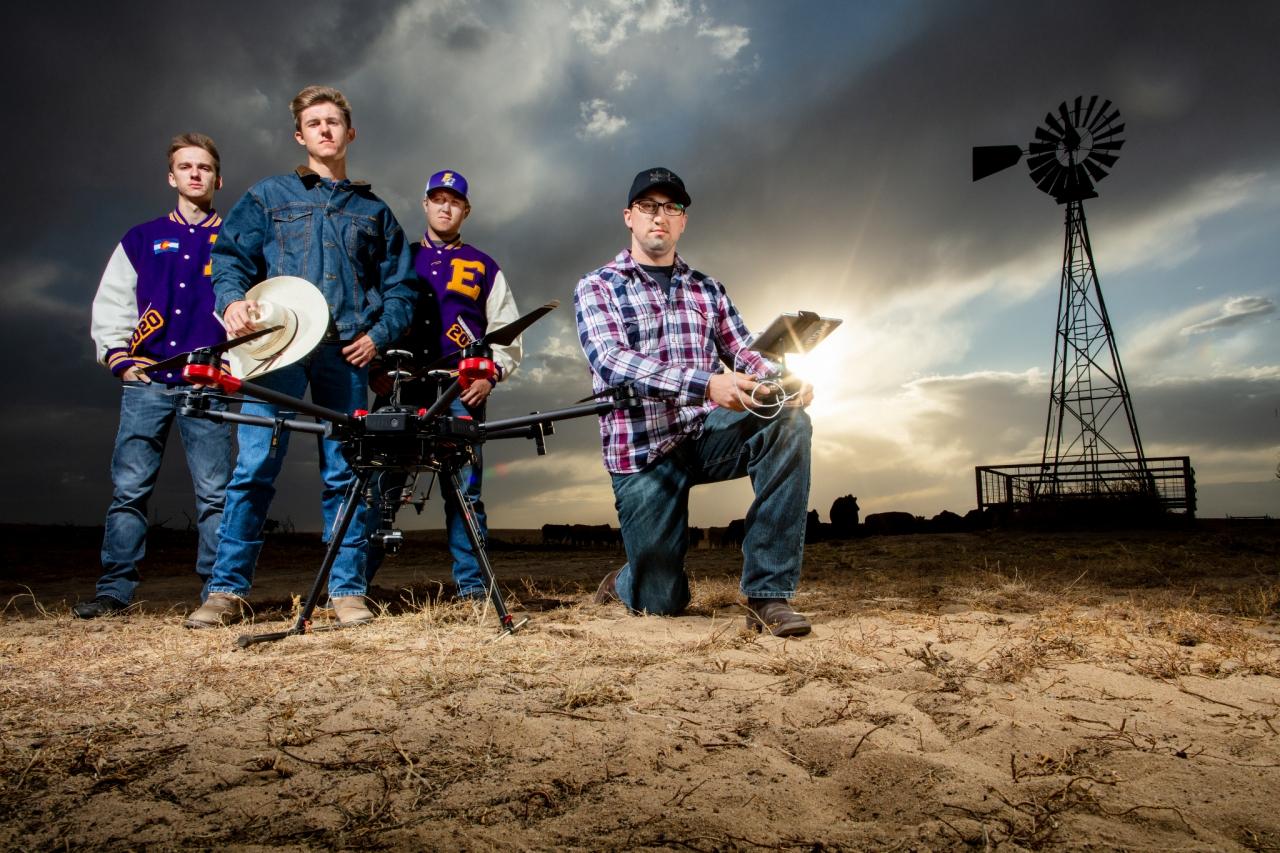
Arrow Electronics, a Fortune 500 electronic components and computer products distribution company, and the Nathan Yip Foundation, an organization that seeks expanded access to education worldwide, recently partnered on a high-school education project that reinforced several advantages of using drones for agriculture.
This STEM (science, technology, electronics and math) project taught youth at a high school in the town of Eads in eastern Colorado how to operate agricultural drones to improve ranching operations.
High-school students who are given the opportunity to learn to operate drones as part of their education are still considered rare – and lucky. However, efforts to educate the next generation of the workforce in drone technology are growing. Arrow’s project may be the first of many in response to drones becoming more important to the U.S. agricultural sector.
The agricultural drone market is skyrocketing and is expected to grow by almost 40 percent worldwide from 2018 to 2025. And the evidence suggests the benefits of drone technology stretch beyond the agriculture industry to society.
This Arrow-Nathan Yip Foundation project demonstrates three ways drones can benefit farmers, youth and the environment.
Drones can save a farmer’s time and money
Drones have become an important tool for sustainable farming. Farmers can fly drones over their fields or pastures to photograph the crops and livestock and retrieve information via technologies like infrared data. The tasks drones can help complete for farmers range from measuring crop density and growth to targeting thirsty areas in fields to probing for airborne pathogens that can lead to plant disease.
These improvements provide farmers with resources to increase crop quality and yields, which also results in higher profits and, of course, more food for consumers.
Youth can improve their tech skills by operating drones
During the Arrow Electronics project, youth gained agriculture and technology skills as they learned to build, fly and operate drones. Just a few other skills that youth develop from operating drones “on the field” include understanding Federal Aviation Administration (FAA) regulations and learning how to analyze the data from the drones to make agriculture decisions.
Agriculture is the primary industry in most rural areas; meanwhile, students living in more remote communities often have limited access to technology resources. Drones can help bridge that gap.
Teaching students how to operate agriculture drones is a win-win: Access to drones can help bridge gaps in technology while improving yields and eliminating inefficiencies within the agricultural sector.
In the case of the high-school project, Arrow’s partnership with the Nathan Yip Foundation was a success. “We are providing technology access to students in Eads that will both improve ranching operations and address the lack of resources often available in rural schools,” said Tarika Cefkin, executive director of the Nathan Yip Foundation, when interviewed recently for the company’s blog.
As drone technology continues to scale up worldwide, in sectors from agriculture to insurance to telecommunications, jobs in the field are growing. Projects akin to the one that Arrow Electronics supported have the potential to teach students cutting-edge skills that can support them in pursuing careers in drone technology.
Drones can be a net positive for the environment
Drones can also be used to prevent several types of environmental disasters. The “eyes in the sky” view that drones provide can spot risks that humans may not see; one example is ranchers’ use of drones to monitor and detect any health issues affecting livestock.
Thanks to drones, farmers can now more efficiently conduct experiments to improve their products — for example, students involved with the Arrow Electronics project used drones to test conditions to determine the healthiest options for crops or livestock.
Drones are also touted as a “green” technology tool because they can help monitor wildlife, inspect solar installations and hydropower projects, and detect sudden changes in climate data. The use of drones can also help farmers grow crops more sustainably, because instead of using tractors and quad bikes that require fossil fuels, farmers can rely on drones to pinpoint where pests are problematic or what areas of a field need more nitrates, allowing for more effective use of resources and preventing the overuse of fertilizers or pesticides.
Watch for drones to become more important to farmers and ranchers as new uses can help revolutionize the world of agriculture – one farm at a time.
Image credit: Arrow Electronics/3BL Media

Debra is a writer and public relations professional based in Upstate New York. Her other interests include graphic design, photography, nature and animals. You can find her on LinkedIn.














